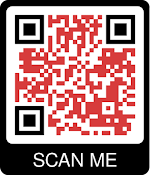The last Cadillac CT6 for the U.S. market
rolled out of the Detroit-Hamtramck assembly plant earlier this year, but it’s
still being built and sold in China. In fact, it’s been updated as the company
has introduced two new versions featuring the automaker’s Super Cruise
semi-autonomous driving system.
The base Super Cruise variant starts at
¥ 469,700 (US$ 66,934 / £ 52,306 / € 57,427) and features a panoramic glass roof, LED
lighting units and 18-inch alloy wheels. Other highlights include a 12.3-inch
digital instrument cluster, a 10.2-inch infotainment system and a 10-speaker
Bose audio system. There are also heated and ventilated front seats, leather
upholstery and a dual zone automatic climate control system.
The range-topping model costs ¥ 489,700
(US$ 69,784 / £ 54,533 / € 59,872) and is distinguished by a sportier exterior with
larger 19-inch alloy wheels. This model also has adaptive headlights and an
adaptive suspension. Both versions are powered by a turbocharged 2.0-liter
four-cylinder that produces 233 hp and 350 Nm of
torque. It is connected to 10-speed automatic transmission which sends power to
the rear wheels.
Of course, the big news is Super Cruise
which uses LiDAR map data and GPS information to precisely pinpoint the car’s
location. On top of that, the vehicle with an assortment of cameras and radar
sensors. All this information is combined to create a “virtual path for the
vehicle to follow.” Thus, the CT6 will stay centered in its lane and
automatically adjust to the flow of traffic.
Cadillac says Super Cruise can be used on
nearly 300,000 km of expressways and highways across China.
That’s pretty impressive, and the company noted they partnered with China’s
AutoNavi to ensure their maps are accurate and precise.
On the safety front, the CT6 has been
equipped with a driver attention system which uses infrared sensors and a small
camera to monitor the driver and make sure they’re paying attention to the road
ahead. If the driver stops paying attention for too long, the system will
remind them. If they fail to respond, additional warnings will be provided
using seat vibrations, audio cues and the light bar on the steering wheel. If
this still doesn’t get their attention, the car will slowly come to a stop and
turn on its emergency lights. The vehicle will also call OnStar to make sure
the driver is okay.







